In the competitive world of compact SUVs, two highly anticipated models are the Lexus LBX and the Volkswagen T-Roc. Each vehicle offers a blend of style, comfort, and performance, but they cater to different audiences. This article takes a closer look at the technical specifications and innovations of both models to help you choose the right fit for your needs.
Lexus LBX vs VW T-Roc – Which one offers the better deal?
Everyday use, family trips or long-distance drives – here’s where the differences show.
Discover whether Lexus LBX or VW T-Roc fits your lifestyle better.
Design and Dimensions
The Lexus LBX presents a sleek, modern exterior with bold lines and a pronounced front grille, typical of the brand's design language. With dimensions of 4190 mm in length, 1825 mm in width, and 1560 mm in height, the LBX stands confidently on the road.
In contrast, the Volkswagen T-Roc offers a range of body sizes, with lengths of 4236 mm and 4271 mm, depending on the variant. Its width ranges around 1819 mm, and it has a height of 1568 mm at its tallest. The T-Roc retains the sporty VW aesthetic while ensuring versatility and practicality in its design.
Engines and Performance
The Lexus LBX is powered by a full hybrid engine, delivering 136 HP through a continuously variable transmission (CVT). It offers options for both front-wheel drive and all-wheel drive. The LBX accelerates from 0 to 100 km/h in approximately 9.2 to 9.6 seconds, depending on the configuration. With fuel consumption as low as 4.5 L/100km and a CO2 output between 102 g/km and 109 g/km, it is a strong contender in fuel efficiency.
The VW T-Roc provides a diverse engine lineup, including petrol and diesel options ranging from 115 HP to a powerful 300 HP in specific configurations. The T-Roc’s acceleration varies significantly, with the swiftest variants achieving 0 to 100 km/h in just 4.9 seconds. Fuel consumption ranges from 4.7 to 7.3 L/100km, and CO2 emissions also vary, making it crucial for buyers to consider their specific engine choice for efficiency.
Interior and Technology Innovations
Inside the Lexus LBX, the cabin exudes luxury, featuring high-quality materials and a contemporary layout. With seating for four and a trunk capacity of 332 L, it balances comfort and practicality. The infotainment system is user-friendly and incorporates innovative features, including advanced driver-assistance systems and connectivity options.
The VW T-Roc can accommodate five passengers and has a larger trunk space of up to 445 L. It is equipped with a modern multimedia system that supports Apple CarPlay and Android Auto, making it a favorite for tech-savvy drivers. The range of customizable interior options allows buyers to personalize their T-Roc further.
Safety Features
Both the Lexus LBX and VW T-Roc come equipped with top-tier safety features. The LBX boasts a comprehensive suite of driver-assistance technologies, focusing on accident prevention and enhancing driver awareness. Its robust build and advanced safety systems have earned it favorable safety ratings.
The T-Roc features similar safety technologies, including adaptive cruise control, lane-keeping assistance, and emergency braking systems. With active and passive safety measures, it aims to provide peace of mind for drivers and passengers alike.
Conclusion: Which SUV to Choose?
Ultimately, the choice between the Lexus LBX and the Volkswagen T-Roc hinges on individual preferences. The LBX appeals to those looking for a premium hybrid experience with striking aesthetics and high comfort levels. On the other hand, the T-Roc offers versatility, a broad engine selection, and advanced technology that caters to a wider audience. Both SUVs present compelling reasons to consider them in the crowded compact SUV market.
Here’s where it gets real: The technical differences in detail
Costs and Efficiency:
Looking at overall running costs, both models reveal some interesting differences in everyday economy.
VW T-Roc has a barely noticeable advantage in terms of price – it starts at 26400 £, while the Lexus LBX costs 28300 £. That’s a price difference of around 1839 £.
Fuel consumption also shows a difference: Lexus LBX manages with 4.50 L and is therefore evident more efficient than the VW T-Roc with 5.50 L. The difference is about 1 L per 100 km.
Engine and Performance:
Power, torque and acceleration say a lot about how a car feels on the road. This is where you see which model delivers more driving dynamics.
When it comes to engine power, the VW T-Roc has a minimal edge – offering 150 HP compared to 136 HP. That’s roughly 14 HP more horsepower.
In acceleration from 0 to 100 km/h, the VW T-Roc is minimal quicker – completing the sprint in 8.90 s, while the Lexus LBX takes 9.20 s. That’s about 0.30 s faster.
In terms of top speed, the VW T-Roc performs slightly better – reaching 212 km/h, while the Lexus LBX tops out at 170 km/h. The difference is around 42 km/h.
There’s also a difference in torque: VW T-Roc pulls noticeable stronger with 250 Nm compared to 185 Nm. That’s about 65 Nm difference.
Space and Everyday Use:
Beyond pure performance, interior space and usability matter most in daily life. This is where you see which car is more practical and versatile.
Both vehicles offer seating for 5 people.
In curb weight, Lexus LBX is slightly lighter – 1280 kg compared to 1465 kg. The difference is around 185 kg.
In terms of boot space, the VW T-Roc offers noticeable more room – 475 L compared to 332 L. That’s a difference of about 143 L.
In maximum load capacity, the VW T-Roc performs distinct better – up to 1350 L, which is about 356 L more than the Lexus LBX.
When it comes to payload, VW T-Roc slight takes the win – 515 kg compared to 475 kg. That’s a difference of about 40 kg.
Who wins the race?
The VW T-Roc proves to be outperforms in nearly all aspects and therefore becomes our DriveDuel Champion!
VW T-Roc is the better all-rounder in this comparison.
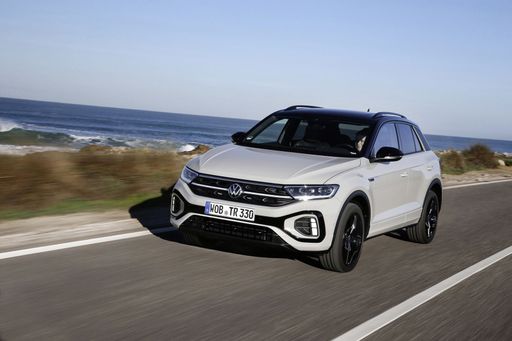 @ Volkswagen AG / VW Media
@ Volkswagen AG / VW Media
VW T-Roc
Lexus LBX
The Lexus LBX wraps premium touches and a surprisingly spacious cabin into a compact crossover that’s perfectly at home in town or heading out on longer drives. It wears the badge with quiet confidence, serving up a refined ride and clever packaging for buyers who want Lexus polish without shouting for attention.
details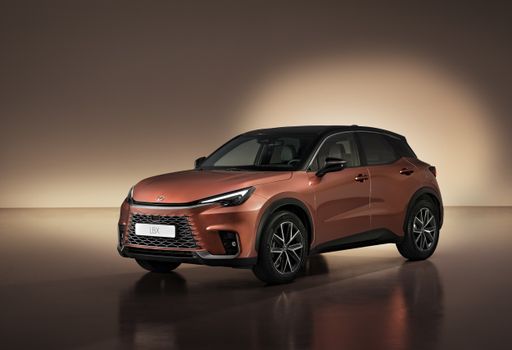 @ Lexus / Toyota Motor Corporation
@ Lexus / Toyota Motor Corporation
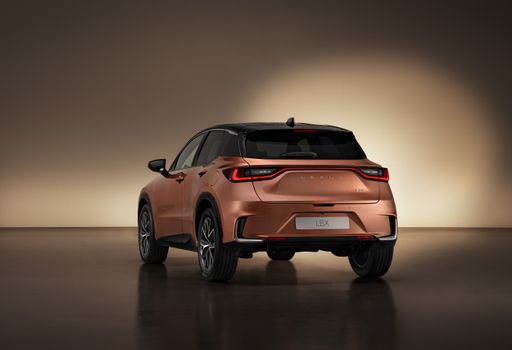 @ Lexus / Toyota Motor Corporation
@ Lexus / Toyota Motor Corporation
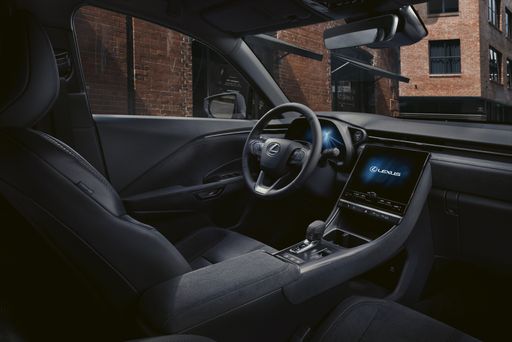 @ Lexus / Toyota Motor Corporation
@ Lexus / Toyota Motor Corporation
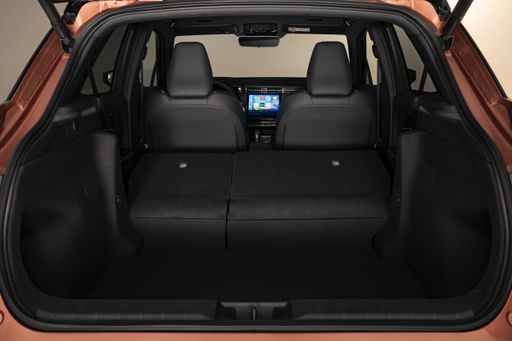 @ Lexus / Toyota Motor Corporation
@ Lexus / Toyota Motor Corporation
VW T-Roc
The VW T-Roc mixes cheeky, coupe-like styling with the everyday sense and space of an SUV, so it looks fun without sacrificing family sense. It’s a likeable all-rounder with tidy road manners and plenty of personality, ideal if you want a car that’s practical enough for chores but entertaining enough to enjoy.
details @ Volkswagen AG / VW Media
@ Volkswagen AG / VW Media
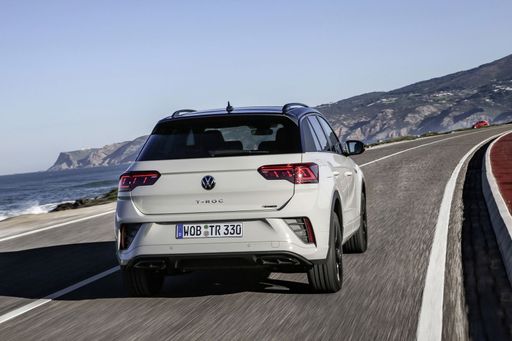 @ Volkswagen AG / VW Media
@ Volkswagen AG / VW Media
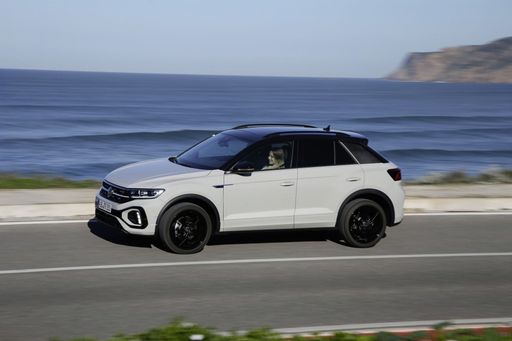 @ Volkswagen AG / VW Media
@ Volkswagen AG / VW Media
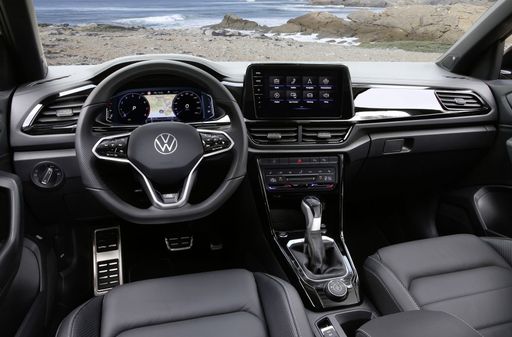 @ Volkswagen AG / VW Media
@ Volkswagen AG / VW Media
 @ Lexus / Toyota Motor Corporation
@ Lexus / Toyota Motor Corporation
|
 @ Volkswagen AG / VW Media
@ Volkswagen AG / VW Media
|
|
|
|
Costs and Consumption |
|
|---|---|
|
Price
28300 - 40000 £
|
Price
26400 - 38000 £
|
|
Consumption L/100km
4.5 - 4.8 L
|
Consumption L/100km
5.5 - 6.3 L
|
|
Consumption kWh/100km
-
|
Consumption kWh/100km
-
|
|
Electric Range
-
|
Electric Range
-
|
|
Battery Capacity
-
|
Battery Capacity
-
|
|
co2
102 - 110 g/km
|
co2
126 - 143 g/km
|
|
Fuel tank capacity
36 L
|
Fuel tank capacity
50 L
|
Dimensions and Body |
|
|---|---|
|
Body Type
SUV
|
Body Type
SUV
|
|
Seats
5
|
Seats
4 - 5
|
|
Doors
5
|
Doors
2 - 5
|
|
Curb weight
1280 - 1365 kg
|
Curb weight
1465 - 1539 kg
|
|
Trunk capacity
255 - 332 L
|
Trunk capacity
284 - 475 L
|
|
Length
4190 mm
|
Length
4271 - 4373 mm
|
|
Width
1825 mm
|
Width
1811 - 1828 mm
|
|
Height
1560 mm
|
Height
1527 - 1573 mm
|
|
Max trunk capacity
992 - 994 L
|
Max trunk capacity
1350 L
|
|
Payload
455 - 475 kg
|
Payload
368 - 515 kg
|
Engine and Performance |
|
|---|---|
|
Engine Type
Full Hybrid
|
Engine Type
Petrol, Petrol MHEV
|
|
Transmission
Automatic
|
Transmission
Manuel, Automatic
|
|
Transmission Detail
CVT
|
Transmission Detail
Manual Gearbox, Dual-Clutch Automatic
|
|
Drive Type
Front-Wheel Drive, All-Wheel Drive
|
Drive Type
Front-Wheel Drive
|
|
Power HP
136 HP
|
Power HP
115 - 150 HP
|
|
Acceleration 0-100km/h
9.2 - 9.6 s
|
Acceleration 0-100km/h
8.9 - 12.3 s
|
|
Max Speed
170 km/h
|
Max Speed
187 - 212 km/h
|
|
Torque
185 Nm
|
Torque
200 - 250 Nm
|
|
Number of Cylinders
3
|
Number of Cylinders
3 - 4
|
|
Power kW
100 kW
|
Power kW
85 - 110 kW
|
|
Engine capacity
1490 cm3
|
Engine capacity
999 - 1498 cm3
|
General |
|
|---|---|
|
Model Year
2025
|
Model Year
2024 - 2025
|
|
CO2 Efficiency Class
C
|
CO2 Efficiency Class
E, D
|
|
Brand
Lexus
|
Brand
VW
|
What drivetrain options does the Lexus LBX have?
Available configurations include Front-Wheel Drive or All-Wheel Drive.
The prices and data displayed are estimates based on German list prices and may vary by country. This information is not legally binding.
